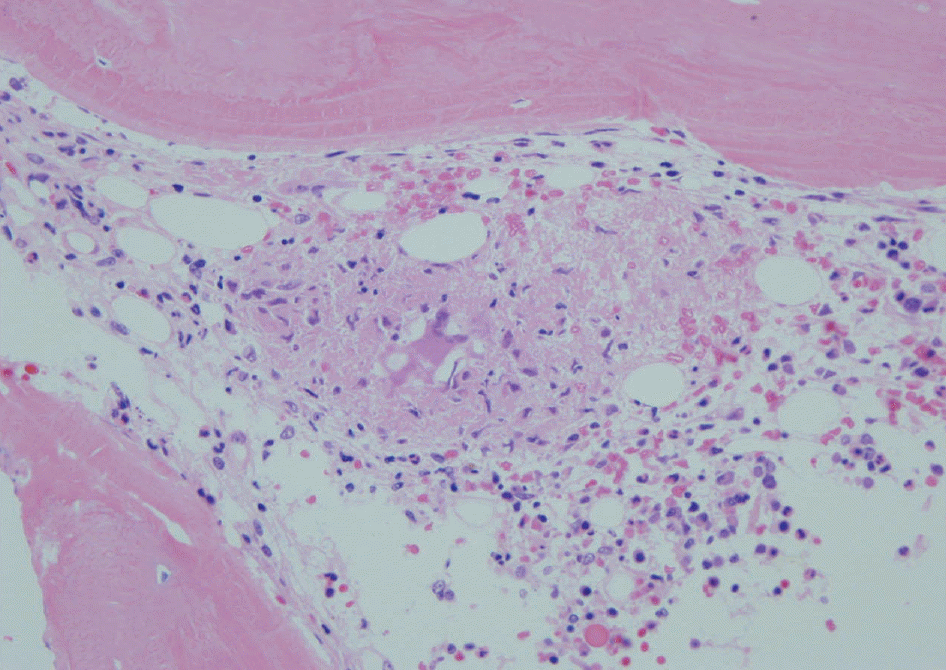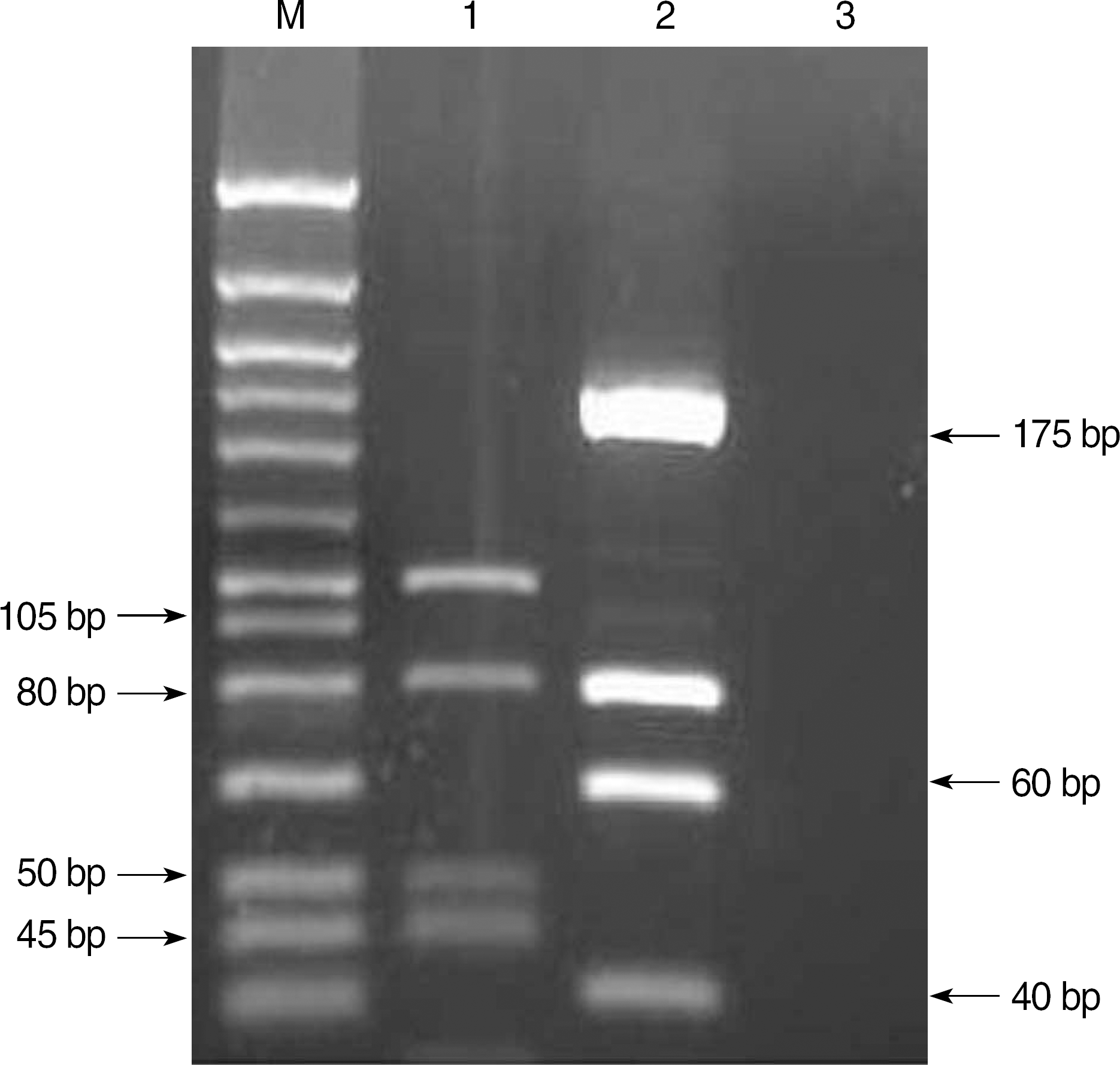Abstract
Isolated bone marrow infection by nontuberculous mycobacteria (NTM) is extremely rare. Recently, we encountered a case of bone marrow Mycobacterium avium complex (MAC) infection, which presented as a fever of unknown origin shortly after starting continuous ambulatory peritoneal dialysis (CAPD). The patient was diagnosed with MAC infection on the basis of PCR-restriction fragment length polymorphism analysis and sequencing of DNA obtained from bone marrow specimens. Although this was a case of severe MAC infection, there was no evidence of infection of other organs. End-stage renal disease (ESRD) patients undergoing dialysis can be considered immunodeficient; therefore, when these patients present with fever of unknown origin, opportunistic infections such as NTM infection should be considered in the differential diagnosis.
Go to : 
REFERENCES
1.Pulliam JP., Vernon DD., Alexander SR., Hartstein AI., Golper TA. Nontuberculous mycobacterial peritonitis associated with continuous ambulatory peritoneal dialysis. Am J Kidney Dis. 1983. 2:610–4.

2.Perazella M., Eisen T., Brown E. Peritonitis associated with disseminated Mycobacterium avium complex in an acquired immunodeficiency syndrome patient on chronic ambulatory peritoneal dialysis. Am J Kidney Dis. 1993. 21:319–21.

3.Perlino CA. Mycobacterium avium complex: an unusual cause of peritonitis in patients undergoing continuous ambulatory peritoneal dialysis. Clin Infect Dis. 1993. 17:1083–4.

4.Irizarry L., Rupp J., Smart J., Nwosu A., Tzamaloukas A. Diagnostic difficulties with mycobacteria peritonitis in a CAPD patient. Perit Dial Int. 1996. 16:427.

5.Ferrara E., Lemire J., Grimm PC., Reznik VM., Mendoza SA., Leake JA, et al. Mycobacterial peritonitis in pediatric peritoneal dialysis patients. Pediatr Nephrol. 2004. 19:114–7.

6.Griffith DE., Aksamit T., Brown-Elliott BA., Catanzaro A., Daley C., Gordin F, et al. An official ATS/IDSA statement: diagnosis, treatment, and prevention of nontuberculous mycobacterial diseases. Am J Respir Crit Care Med. 2007. 175:367–416.

7.Otaki Y., Nakanishi T., Nanami M., Aizawa M., Yanase K., Hiraoka K, et al. A rare combination of sites of involvement by Mycobacterium intracellulare in a hemodialysis patient: multifocal synovitis, spondylitis, and multiple skin lesions. Nephron. 2002. 92:730–4.
8.Wen YK., Chen ML. Crescentic glomerulonephritis associated with non-tuberculous mycobacteria infection. Ren Fail. 2008. 30:339–41.

9.Cuervo LM., Martinez FR., Guillot FB., Martinez JC., Font ME. Report of Mycobacterium avium-intracellulare associated with kidney mycobacteriosis. Rev Cubana Med Trop. 2003. 55:58–60.
10.O'Brien RJ., Geiter LJ., Snider DE Jr. The epidemiology of nontuberculous mycobacterial diseases in the United States. Results from a national survey. Am Rev Respir Dis. 1987. 135:1007–14.
11.Chaisson RE., Moore RD., Richman DD., Keruly J., Creagh T. Incidence and natural history of Mycobacterium avium-complex infections in patients with advanced human immunodeficiency virus disease treated with zidovudine. The Zidovudine Epidemiology Study Group. Am Rev Respir Dis. 1992. 146:285–9.
Go to : 
 | Fig. 1.Bone marrow was normocellular and reactive, with histiocytic hemophagocytosis and atypical, non-caseous necrotic regions (hematoxylin and eosin stain, ×400). |
 | Fig. 2.Metaphor agarose gel (4%) electrophoresis of the Msp I-digested PCR product. Lane M, molecular size marker. Lane 1, bone marrow specimen of the patient, showing a protein profile similar to that of Mycobacterium avium (105 bp, 80 bp, 50 bp, and 45 bp). Lane 2, positive control (Mycobacterium tuberculosis; 175 bp, 80 bp, 60 bp, and 40 bp). Lane 3, negative control. |




 PDF
PDF ePub
ePub Citation
Citation Print
Print



 XML Download
XML Download